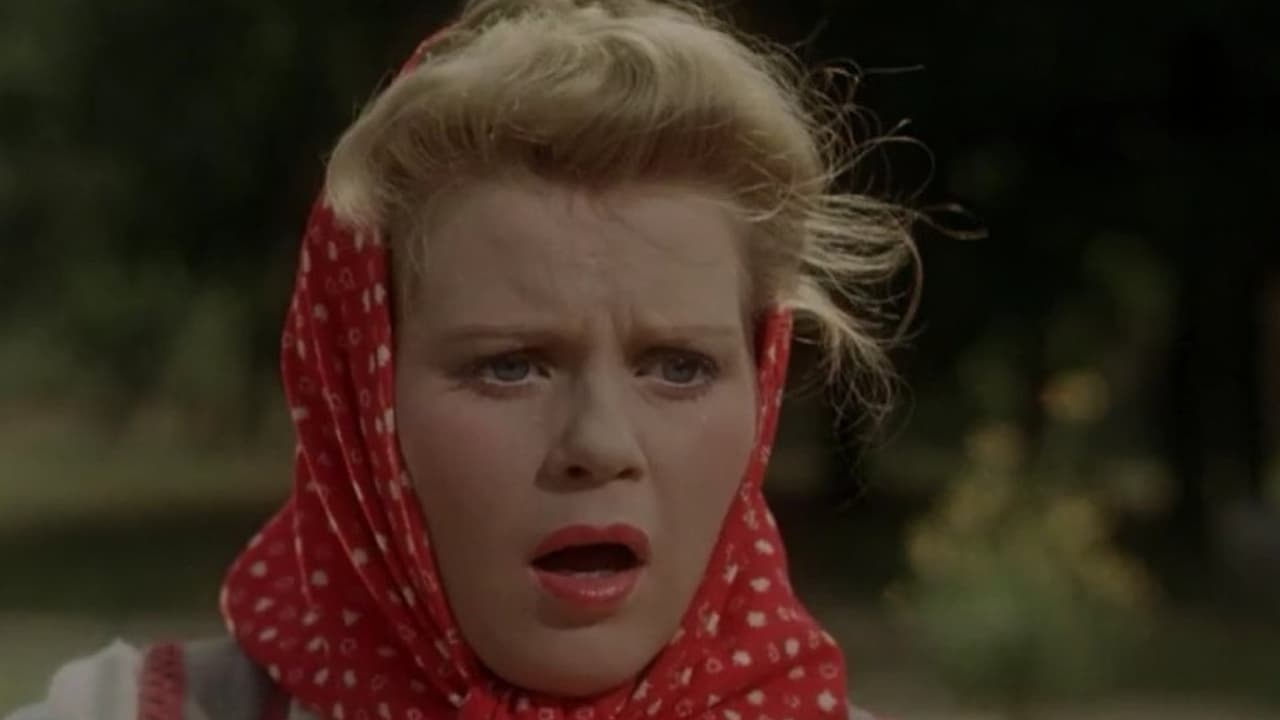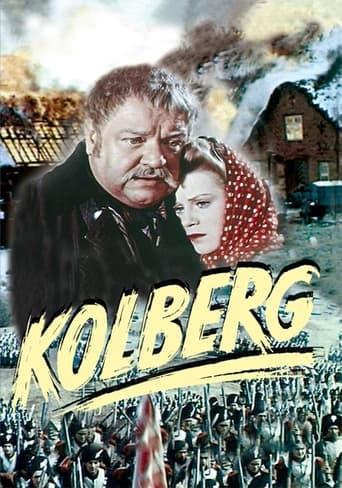



This movie is the proof that the world is becoming a sick and dumb place
View MoreBrilliant and touching
The best films of this genre always show a path and provide a takeaway for being a better person.
View MoreIt's a good bad... and worth a popcorn matinée. While it's easy to lament what could have been...
View More"Kolberg" is a German film from 1945 by the infamous writer and director Veit Harlan and even if Germany had already lost the war at this point, the film industry had not yet understood that the fight was lost. The core message of this Nazi German propaganda is that they are telling the German population to hang in because no matter how hopeless and bad the situation seems, there is always the possibility to turn the tables. The core hatred in here is not against Jews anymore as in many other propaganda films, but it is the French guys getting their fair share this time. It plays during the days of Napoleon and he is also one of the main characters in here, the main antagonist as we watch the (likeable) Prussian forces desperately and bravely fight the evil French forces. In order to include an emotional impact, Heinrich George's and Kristina Söderbaum's characters were included. They do not necessarily have a whole lot to do with the military battle, but they are inevitably confronted with it. And the ending of course, in old Nazi manner, shows that all the dying, all the sacrifice and all the losses were worth it and had to happen in order to gain victory. Well.. I must say there were a couple solid moments in terms of story-telling, more than usual for a Harlan film, but overall it was not enough for a 100-minute movie I must say. The message to hang in is worth discussing if it is really that bad to allow people to ban this movie. I don't really think so. But I also do not think that story-telling or acting in here are memorable enough (or memorable at all) to say this film is worth watching. I personally five it a thumbs-down and do not recommend checking it out.
View MoreTo correct one thing the first critic said, KOLBERG was released on January 31, 1945. But it's release came to late to increase the morals of the Wehrmacht, because at the end of Janauary things went not so well for the German Army, because the Red Army reached the Oder, some 60 km near Berlin. Furthermore the powers of the Wehrmacht were nearly exhausted, due to the loss of arms and men. So it was clear to see for the most, that we would loose the war, unless the promised Wunderwaffen would not come to action. And that never happened. Nevertheless KOLBERG is an interesting experience. Alt last I'd like to point out HEINRICH GEORGE, who truly was one of our greatest Actors in Theatre and Film ever, in his role of the Bürgermeister of Kolberg. A stunning performance.
View MoreApparently, this propaganda film (funded by none other than Goebbels, with the aim of strengthening the idea of a "Volksfront") had the largest budget and took the longest to complete of any German wartime film. The producers mention that the events portrayed are rooted in historical events. Sorry. "Kolberg" is loosely based on the exploits of Ferdinand von Schill's Freikorps in the Hanseatic City of Stralsund. In the film, the citizenry, their patriotic passions aroused by the dashing Schill, successfully vanquishes the French troops. In reality (1809), the French routed Schill's Freikorps, decapitated him posthumously, and sent his severed head in a bottle to King Jerome of Westphalia (Napoleon's brother-in-law). Hmmm. I have to say that I prefer my Nazi propaganda straight, without the anachronistic melodrama. In short, this film can only be stomached by academics and true psychos.
View MoreSome legends rank around this last big budget nazi movie. Well, the battle scenes with more than 180.000 extras, the flood-sequence and the destruction of Kolberg are filmed with some enthusiasm. But as an instrument of propaganda it's not convincing anymore. It seems even director Veit Harlan didn't believe the plot he was ordered to tell (and which is historically wrong). There's a lot of shrill and loud shouting and the typical glorification of Prussian militarism that seems so ridiculous and pervert when you consider what has happened at the same time in real life when the movie was released (30 January 1945). An evil but nevertheless perfectly done picture which was fortunately released too late for maintaining the resistance of German citizens against Allied forces.
View More